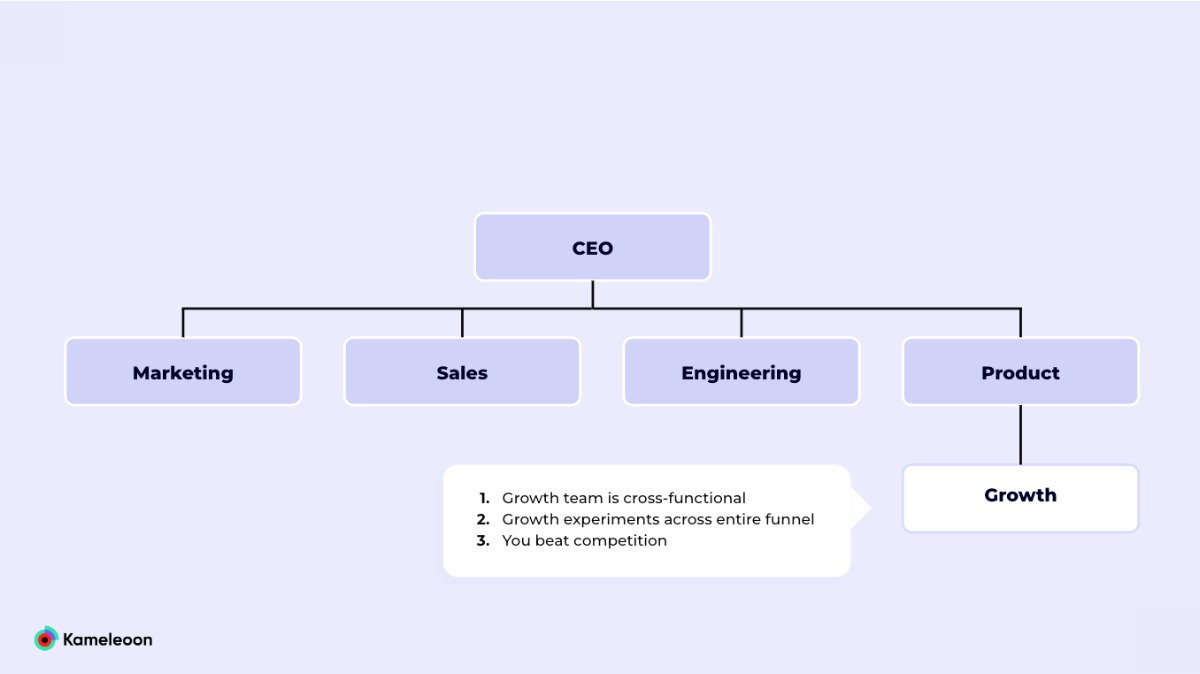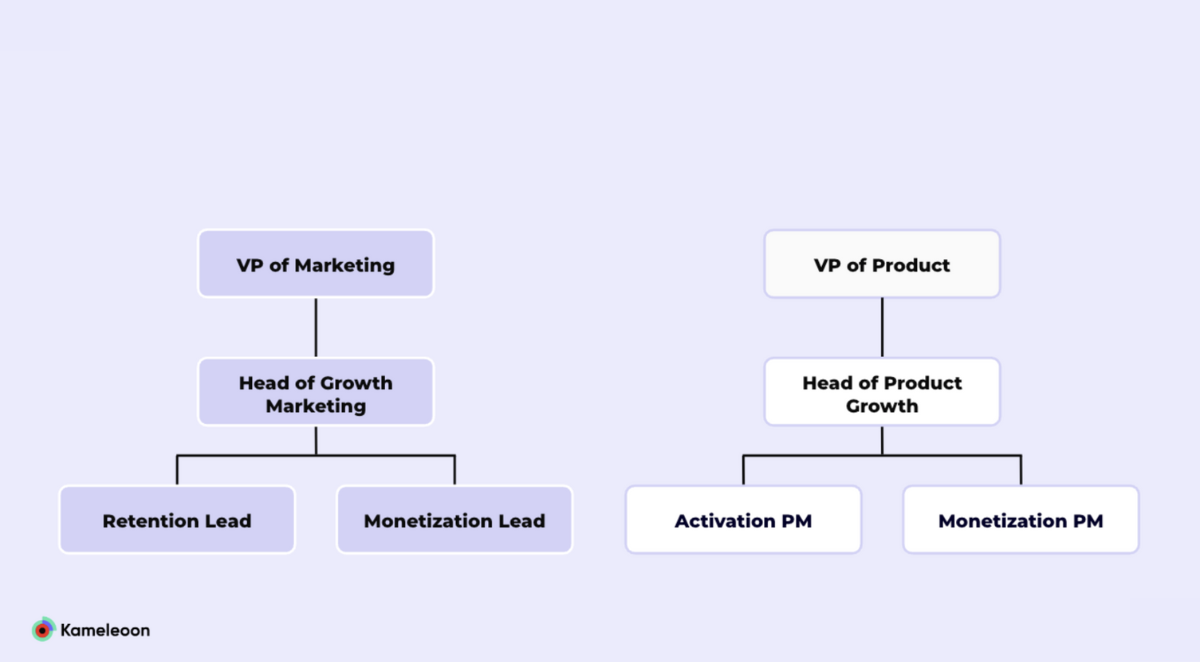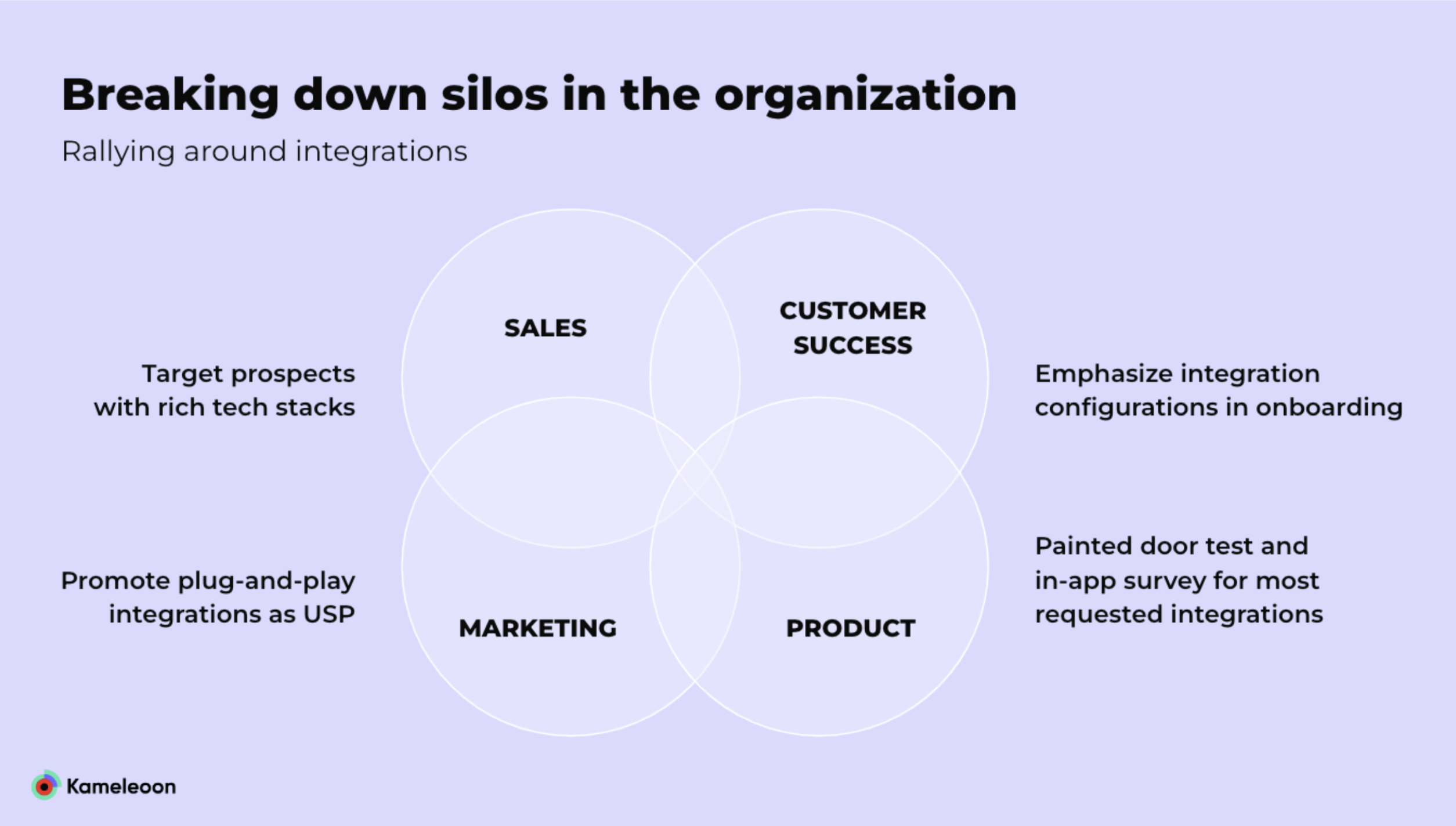
How product and marketing teams leverage experimentation to drive product-led growth
As customer acquisition costs rise and traditional marketing tactics prove less effective, high-performing companies have turned to other methods of growth.
Enter product-led growth (PLG), a popular growth strategy that promises increased returns, better retention, and reduced churn, all at a lower cost.
According to Product-Led, more than 90% of companies plan to increase their investment in product-led growth. But what does that look like in practice? And how are different teams coming together and using experimentation as the fuel for a product-led model?
We sat down with Leah Tharin, Head of Product at Jua.ai, Franciska Dethlefsen, Head of Growth Marketing at Amplitude, and Bhavik Patel, Founder at CAUSL, to discuss the answer to these questions and learn how to coordinate the efforts of all teams to support PLG.
We also shared a case study of how Kameleoon has successfully done it in our own organization. Use this as a blueprint to get started with PLG at your own company.
Access the webinar replay now to learn about PLG from three top industry experts.
1 The structure of your growth team is paramount to success
One of the first questions people ask when getting started with PLG is, how do I structure my growth team?
According to Leah, the most common PLG team structure she sees is a growth team that sits under product. The growth team is led by a Growth Product Manager who is responsible for all aspects of product-led growth across the entire customer journey.
Although this team sits under product, they work closely with other departments, such as sales and marketing, to acquire customers and achieve their goals.

Bhavik agrees that this structure is most common and makes sense in terms of which department has the ability to influence the entire customer lifecycle.
Franciska proposes a different take on a PLG team structure, in what she describes as “collaborative siloes.” Rather than having a single growth team under product, the growth team at Amplitude is divided across product and marketing.
Each team has a Head of Growth, and each team manages different stages of the customer lifecycle.

Although the teams appear separate, they work very closely together. The advantage here is marketers report to marketers, product managers report to product managers, and both teams are able to own the parts of the customer journey that they can impact the most.
2Cross-functional alignment is critical
No matter what your team structure looks like, keeping product, marketing, and sales aligned is critical. Here’s how our experts suggest achieving alignment across teams.
Set clearly defined metrics
The growth marketing and product growth teams at Amplitude have clearly defined metrics across the customer journey that they share, according to Franciska.
These metrics drive the behaviors of all teams, from marketing and product, to sales and customer success. They ensure teams are working towards achieving the same goals and are an important aspect of cross-functional alignment.
Engage in frequent communication
Frequent communication can help keep product and marketing aligned, especially when growth sits in two different departments.
Franciska notes that a separate growth team structure may result in more meetings and frequent updates between teams. She suggests a regular meeting cadence and over-communication between teams to ensure siloes remain collaborative, rather than restrictive.
Set the right incentives
To keep separate teams moving in the same direction, the right incentives need to be in place. Shared metrics are one way to keep teams incentivized to help one another.
Leah says cross collaboration can be naturally enforced through incentives. An example she shares is to incentivize sales on expansion as opposed to just closing deals. In doing so, sales teams are motivated to think about generating revenue across the customer lifecycle, rather than just acquisition.
3Experimentation fuels product-led growth
According to Bhavik, experimentation, or product science, is the best way to quantify and measure product efforts.
Product science is about making observations on user behavior, generating hypotheses, and testing those hypotheses with experimentation. Product management decisions are then based on the experiment data.
This holds product teams accountable and gives them a way of quantifying their investments. Whereas marketing teams have traditionally been the ones needing to prove ROI, experimentation gives product teams the means to do so as well.
By aligning these experiments so they impact product metrics, North Star Metrics, and ultimately revenue, teams can finally unlock exponential growth.
4How Kameleoon transitioned to a product-led model
The transition from sales and marketing-led to product-led can be a daunting endeavor. Here are the steps we took at Kameleoon to move towards a product-led motion. Use this framework in your own organization to transition towards a PLG model.
1. Generating a hypothesis around what drove user retention
The first step in our PLG process was to develop a hypothesis around what drove user retention. Using our app usage data, we hypothesized that the number of integrations a user had was positively correlated with user retention rate.
With this metric, we identified a cohort of our highest value customers - those with a large number of integrations in Kameleoon. We chose this as the metric we were going to try to impact across the organization.
2. Rallying all departments around tech integrations
From here, we got to work rallying all teams behind the shared metric of ‘number of integrations per user.’ This involved:
- Product administering in-app surveys around requested integrations.
- Sales developing partnerships with top integration partners and targeted prospects with rich tech stacks.
- Marketing promoting plug-and-play integrations in marketing materials.
- Customer Success tailoring their onboarding to configuring integrations.
We also leveraged our own experimentation solution, Kameleoon, to test our hypothesis using a painted-door experiment. This allowed us to see on our website, in real time, which simulated integrations users were interacting with.

3. Defining our North Star and Input Metrics
After a few short months, we saw our efforts in rallying around a shared Input Metric start to pay off. We were seeing higher customer satisfaction rates and fewer customers in the red.
Now that the groundwork was laid, we were ready to define our North Star Metric and other associated Input Metrics. This was based on our app usage data that we had been collecting for several months.
We defined our North Star Metric as the number of daily active campaigns. Once defined, departments could align their efforts to impact the North Star Metric.
4. Developing and launching a free trial
We knew launching a free trial was important because it would help us widen our funnel and feed more into our North Star Metric. It is also the cornerstone of product-led growth.
Product led the charge in developing the free trial product, a feat that was made possible with Kameleoon’s own feature flagging solution. With Kameleoon feature flags, we were able to:
- Control which features were available to free trial users.
- Test trial parameter variations to see which offer was most appealing.
- Use a painted door test to gauge interest in “locked” features.
By taking an experimental approach and using our own feature management solution, we were able to identify the features our customer actually wanted in a free trial, thereby increasing the effectiveness of our offering.
5. Cross-functional collaboration across the entire customer journey
The free trial enabled our teams to be a lot more intentional about how they shared the funnel. Instead of handing off leads to other teams in the dark, different departments could support each other across the customer journey.
The collaboration across teams was made more holistic, with product able to take center stage in the entire process.
Start your free trial of Kameleoon today
Now that you’ve learned how to unify product and marketing in PLG and how we’ve successfully adopted PLG at Kameleoon, it’s time for you to try it yourself.
Start your free trial of Kameleoon’s feature management and experimentation solution today and see how a platform like Kameleoon can help you drive PLG with experimentation.
You’ll have access to unlimited feature flags, unlimited feature rollouts and feature experiments, custom data for audience targeting, and so much more.
Sign up for your 30-day free trail, here.







